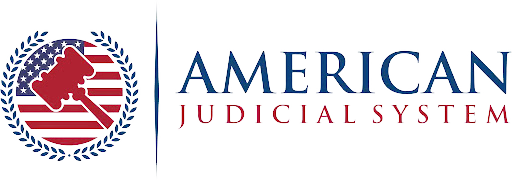In today’s fast-paced world, the automobile dictates the rhythm of daily life. Yet, your vehicle can swiftly transform into a dangerous agent of chaos, leaving participants with more than just vehicular wreckage. Every year, millions find themselves caught in the aftermath of a jarring car accident.
Vehicles can be repaired, however human casualties often bear profound scars. Understanding the spectrum of injuries sustained in crashes, from the mundane to the catastrophic, is essential for prevention and for informed responses in the aftermath.
Navigating the aftermath of a car accident requires more than medical treatment. Legal guidance is an essential component in the journey to recovery, especially when dealing with insurance claims and liabilities.
The Law Office of Jason Hatfield provides insight into this intricate process. “Understanding the nuances of each case is crucial,” notes car accident attorney Jason Hatfield. “Every injury, every accident, is unique. Our role is ensuring victims receive the support they need to rebuild their lives, physically and financially.”
The Jarring Reality: A Spectrum of Injuries
When a car accident occurs, the forces involved can lead to a range of injuries, varying in severity and impact. The most prevalent of these are soft tissue injuries, with whiplash being a well-known example. This happens when the sudden stop of a vehicle forces the neck to jolt back and forth abruptly, akin to the cracking of a whip. While often dismissed as minor, the pain and stiffness associated with whiplash can persist for weeks, sometimes longer, disrupting daily life with a nagging ache.
To the untrained eye, bruises and contusions might appear as mere superficial blemishes. However, they signal the body’s internal struggle against the forces exerted during an accident. In more severe cases, these may accompany more grave injuries, such as bone fractures. The ribs, arms, and legs are frequent sites of such fractures, often due to the bracing instinct that leads individuals to shield themselves against the impact.
A Matter of Impact: Head and Brain Injuries
Perhaps the most concerning injuries sustained in car accidents involve the head and brain. Even with modern safety features like airbags and seatbelts, the head remains vulnerable. Concussions, a mild form of traumatic brain injury (TBI), are common in collisions. They may not always present immediate symptoms, but over time, issues like headaches, dizziness, and cognitive impairments can manifest, complicating recovery.
In severe cases, TBIs can occur, resulting in long-term disability or even altering an individual’s personality. The brain, being the control center of the body, governs countless functions, making any injury to it complex and challenging to address.
From the Seatbelt: Chest and Abdominal Injuries
While seatbelts are crucial for saving lives, they can be the source of certain injuries. The force exerted by a seatbelt during a collision can lead to bruising or fractures of the ribs, and injuries to internal organs. The chest absorbs much of the impact, protecting vital organs, yet making it susceptible to contusions and fractures. In more severe accidents, the impact can cause internal bleeding, a hidden threat requiring immediate medical attention.
Abdominal injuries, although not as common, are no less significant. The force of impact can lead to damage to internal organs such as the spleen or liver, necessitating surgical intervention and a longer recovery period.
The Silent Suffering: Psychological Impact
Beyond the physical, car accidents often impose a heavy psychological toll. Post-Traumatic Stress Disorder (PTSD), anxiety, and depression are not uncommon among accident survivors. The invisible psychological scars can be as debilitating as physical injuries, affecting individuals’ ability to return to their normal routines. Addressing these issues is imperative for comprehensive recovery, often requiring professional counseling or therapy.
Insights from the Frontlines: Legal Perspectives
Legal professionals play a pivotal role in bridging the gap between accident victims and the compensation necessary for their recovery. Their expertise in interpreting the law provides a semblance of order and justice, often serving as a lifeline for individuals navigating the tumultuous aftermath of an accident.
Beyond Recovery: Prevention and Awareness
While the aftermath of car accidents can be grim, prevention remains the most effective strategy. Public awareness campaigns and stringent driving laws aim to mitigate the risk factors leading to accidents. Simple measures, such as obeying speed limits, avoiding distractions, and never driving under the influence, hold the power to save lives.
Technological advancements in vehicle safety, from enhanced airbags to collision avoidance systems, continue to evolve, offering additional layers of protection. Yet, the responsibility still lies with individuals to remain vigilant and proactive in their driving habits.
Car accidents, with their wide-ranging consequences, serve as poignant reminders of the fragility of human life amidst the mechanical.
Acknowledging the spectrum of injuries they can cause is a step toward greater preparedness and empathy for those affected. As society inches toward safer roads and smarter vehicles, the hope remains that understanding and prevention can pave the way for fewer lives disrupted by life changing car accidents.
A Step-by-Step List of What to do After a Car Accident
Safety Above All Else:
Check yourself and others for injuries. If anyone is seriously injured, call 911 immediately.
If possible move vehicles to a safe location, away from traffic. If not, stay inside your vehicle keeping your seatbelt fastened until help arrives.
Call for Help:
Call your local police department to report the accident, even if it seems minor.
Gather Information:
If you are able to do so, exchange contact information, insurance information, and vehicle registration details with all parties involved.
Document the accident scene with photos, including vehicle damage, road conditions, and other relevant details.
Report the Accident:
Report the accident to your insurance company as soon as possible.
Provide a statement to the police if requested.
Get Medical Attention:
Get checked by a doctor even if you don’t feel you’ve been hurt. Some injuries, like whiplash or internal injuries, can be delayed and not become apparent right away.
Document Everything:
Keep copies of all documents related to the accident, including police reports, insurance claims, and medical records.
Save receipts for any expenses related to the accident, such as medical costs, car repair bills, or lost wages.
Follow Up:
Keep your insurance company updated on your progress and any changes in your situation.
If you are experiencing emotional distress or mental health issues, seek professional help.










